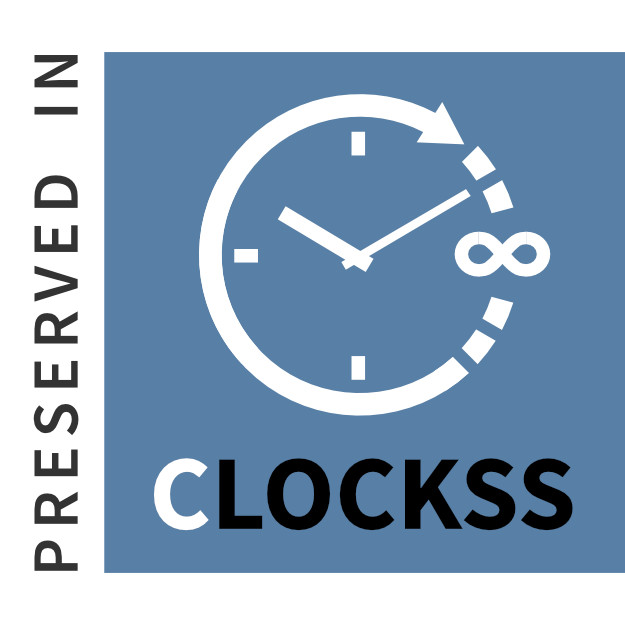القدرات الاجتماعية للمنتجات الصناعية المحاكية للكائن الحي وعلاقتها بالتفضيل الجمالي
DOI:
https://doi.org/10.35560/jcofarts1459الكلمات المفتاحية:
التفضيلات الجمالية، القدرات الاجتماعية، المنتجات الصناعيةالملخص
اهتم البحث الموسوم بـ(القدرات الاجتماعية للمنتجات الصناعية المحاكية للكائن الحي وعلاقتها بالتفضيل الجمالي) بدراسة ظاهرة القدرات الاجتماعية للمنتجات المحاكية للكائن الحي والمؤثرة على دور القدرات الاجتماعية في إضفاء صبغة التفضيل الجمالي لهوية المنتج الصناعي لغرض تلبية وسد حاجة المستهلك، فتضمن مشكلة البحث متمثلة بالسؤال التالي: هل ان القدرات الاجتماعية لها علاقة بالتفضيل الجمالي للمنتج الصناعي المحاكي للكائن الحي (الروبوت)؟ يعد البحث خطوة لدراسة وتحديد مفهوم القدرات الاجتماعية وعلاقتها في تصميم المنتجات المحاكية للكائن الحي. أما منهجية البحث فقد تمخضت عن اختيار عينة البحث وفقا لقربها من أهداف الدراسة، احتوت منتجات من شركة (Cerevo) و (Keenon) للعام من (2020 الى 2023) تضمنت (5) عينات تم اختيار عينة قصدية من نموذجين ملائمة لمتطلبات البحث. فقد احتوى على وصف للنماذج وتحليلها ومحتوياً على النتائج والاستنتاجات التي توصل أليها الباحث وأهمها: فان التفضيلات الجمالية في تصميم المنتج الصناعي وعلاقتها بالقدرات الاجتماعية تلعب دورًا أساسيًا في المعالجة العاطفية وتحفزها الجماليات لتشكيل أسس تفاعل بين الانسان والمنتج الصناعي وذلك من خلال (الاتجاه، العاطفة، التعقيد).
المراجع
Al-Sadhan, Musaed bin Abdullah and Nahar Bahij Abdel Fattah: “Comprehensive design and the extent of applying its principles within residential buildings in the city of Riyadh, Kingdom of Saudi Arabia.” Emirates Journal of Engineering Research, pp. 3-4
Billings DR, Schaefer KE, Chen JY, Hancock PA. 2012. Human robot interaction: developing trust in robots. In: HRI12- proceedings of the 7th annual ACM/IEEE international conference on human-robot interaction. Piscataway: IEEE, 109 110.
Blijlevens, J., Creusen, M. E. H., & Schoormans, J. P. L. (2009). How consumers perceive product appearance: The identification of three product appearance attributes. International Journal of Design, 3(3), 27-35.
Bloch, P. H. (1995). Seeking the ideal form: Product design and consumer response. Journal of Marketing, 59(3), 16-29.
C. Breazeal (2002). ‘Designing Sociable Robots’. Cambridge, MA, USA. MIT Press.
Coeckelbergh. 2012. Can we trust robots? Ethics and Information Technology 14(1):53 60
D. Hanson (2006). ‘Exploring the aesthetic range for humanoid robots. Proceedings of the ICCS/Cog Sci-2006 Long Symposium: Toward Social Mecha nisms of Android Science.
Floyd M, Drinkwater MW, Aha DW (2014) Floyd M, Drinkwater MW. Situation-based behavioral adaptation using an inverse measure of confidence. AAAI Workshop - Technical Report 2014
Goetz J, Kiesler S, Powers A (2003) Matching robot appear ance and behavior to tasks to improve human-robot cooperation. In: The 12th IEEE international workshop on robot and human interactive communication, proceedings. ROMAN 2003, Mill brae, CA, USA, p.55–60
Green, SA, Billinghurst M, ChenX, Chase JG. 2008. Human-robot col-laboration: a literature review and augmented reality approach in design. International Journal of Advanced Robotic Systems 5:1-18
Hajy, W. F. (2018, January). Effect of Active Learning Strategy on Mathematical Concepts Acquisition in Mathematics for Fourth Grade Primary. Journal of College of Education for Women, pp. 1939-1948.
Hamdi, Najwa Muhammad: The Concept of Complexity and Simplification in Interior Design, Journal of International Design, Scientific Society of Designers, Volume 11, Volume 1, 2021, pp. 3-5.
Hekkert, P., & Leder, H. (2008). Product aesthetics. In H. N. J. Schiffer stein & P. Hekkert (Eds.), Product experience (pp. 259-285). San Diego, CA: Elsevier.
Hsiao, K. A., & Chen, L. L. (2006). Fundamental dimensions of affective responses to product shapes. International Journal of Industrial Ergonomics, 36(6), 553-564.
Huang W. 2016. When HCI meets HRI: Intersection and Excellence. In: Proceedings of the Ninth Northern Conference on Human-Computer Interaction. 1-8.
Hung, W. K., & Chen, L. L. (2012). Effects of novelty and its dimensions on aesthetic preference in product design. International Journal of Design, 6(2), 81-90
K. Klemp and K. Ueki-Polet (2010). ‘Less and More: The Design Ethos of Dieter Rams’. Die Gestalten Verlag, Berlin.
L. A. Zebrowitz (1997). ‘Reading Faces: Window to the Soul?’ Boulder, CO, Westview Press.
Leder, H., & Carbon, C. C. (2005). Dimensions in appreciation of car interior design. Applied Cognitive Psychology, 19(5), 603-618.
N. Tractinsky, A.S. Katz, D. Ikar (2000). ‘What is beautiful is usable’. Interacting with Computers 13, pp. 127-145.
Petersen M, Iversen O, Krogh P, Ludvigsen M. 2004. Aesthetic interaction a pragma tists aesthetics of interactive systems. 269-276.
Pfeifer R, Lungarella M, Iida F (2012) The challenges ahead for bio-inspired “soft” robotics. Commun ACM 55(11):76–87.
S. E. Guthrie (1997). ‘Anthropomorphism: A Definition and a the ory’. In: R. W. Mitchell, N. S. Thompson, and H. L. Miles, ‘Anthro pomorphism, anecdotes, and animals. Albany: State University of New York Press.
Stoeva D, Gelautz M. 2000. Body language in affective human robot inter-action. In: ACM/IEEE international conference on human-robot interaction. Piscataway: IEEE, 606 608.
T. W. Fong, I. Nourbakhsh, I, K. Dautenhahn (2003). ‘A Survey of Socially Interactive Robots: Concepts, Design, and Applications’, Robotics and Autonomous Systems, 42(3 – 4), 142 – 166.
ThrunS (2004) Towards a framework for human-robot interaction. Human Interaction 19 (1-2): 9-24.
Veryzer, R. W., & Hutchinson, J. W. (1998). The influence of unity and prototypicality on aesthetic responses to new product designs. Journal of Consumer Research, 24(4), 374- 385
التنزيلات
منشور
إصدار
القسم
الرخصة
الحقوق الفكرية (c) 2025 Tayseer Abdul Karim Abboud, Ali Ghazi Matar

هذا العمل مرخص بموجب Creative Commons Attribution 4.0 International License.













